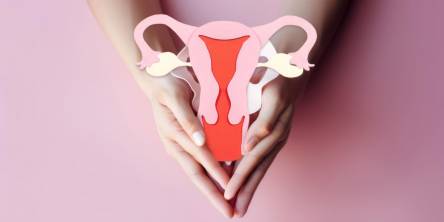5 Common Gynecological Issues That Can Affect the Cervix

The cervix is the lower part of the womb (uterus), where the fetus develops during pregnancy. A tiny hole in the cervix widens during birthing. It also lets menstrual blood exit her body. Many diseases can damage the cervix and produce numerous severe problems, impacting reproductive health and even causing infertility in women.
As a result, women should actively learn about these disorders in order to avoid and reduce their impact. In this article, we have gathered five common gynecological issues that can affect the cervix.
1. Cervicitis
Cervicitis is an inflammation of the cervix. It usually has no symptoms, and you may discover you have it after a pelvic examination conducted by your doctor for another reason. If you do experience symptoms, they may include:
- A significant amount of abnormal vaginal discharge
- Painful and frequent urination
- Pain during intercourse
- Bleeding in between periods
- Vaginal bleeding after intercourse
Cervicitis is caused mainly by a sexually transmitted disease, such as chlamydia or gonorrhea. However, it can also develop from noninfectious reasons. Cervicitis can only be successfully treated if the underlying cause of the inflammation is addressed.
2. Cervical stenosis
Cervical stenosis is a disorder in which the cervix narrows or entirely closes, making the passage between the uterus and the vaginal canal difficult or impossible. Cervical stenosis might be present from birth due to a hereditary issue, or it can develop as a result of other disorders or operations. Cervical stenosis may cause minimal or no symptoms in some women, particularly those who have reached menopause.
Cervical stenosis has been linked to irregular periods, amenorrhea, dysmenorrhea, and infertility. Cervical stenosis can be treated by your gynecologist by physically expanding the cervix with dilators. Dilators are thin, lubricated rods that come in progressively bigger diameters and can be placed one at a time until the desired dilation is achieved.
3. Nabotian cysts
Nabothian cysts are tiny, mucus-filled cysts that develop on the cervix's surface. It is a benign lesion caused by squamous epithelial cell overgrowth. Nabothian cysts can be tiny or huge depending on the stage of development. Nabothian cysts seldom cause symptoms, and patients are generally unaware of the ailment until they visit a gynecologist.
Nabothian cysts are not life-threatening in general, although they might interfere with a woman's sex life and fertility. However, the majority of them resolve on their own without therapy. But, if the cyst becomes too big, it may rupture on its own, resulting in infection.
4. Cervical ectropion
Cervical ectropion (or erosion) is a completely benign condition. Because it is linked to estrogen, it is more frequent in young women, pregnant women, and those on combined oral contraceptive tablets. It might result in increased vaginal discharge or bleeding.
Ectropion is most often treated with the help of a burning technique (cautery) or by using an electrical current (diathermy). This procedure is performed under local anesthesia (when you are awake).
5. Cervical cancer
Cervical cancer is a form of gynecological cancer that develops in the cervix's cells. Cervical cancer in its early stages usually develops asymptomatically. Signs and symptoms of advanced cervical cancer include:
- Vaginal bleeding after intercourse, between periods, or during menopause
- Watery, bloody vaginal discharge that may be thick and odorous
- Pelvic pain
- Pain during sex
Most cervical cancers are caused by different strains of the human papillomavirus (HPV), a sexually transmitted virus. Cervical cancer develops when healthy cells in the cervix get DNA alterations.
If your doctor diagnoses cervical cancer, you will be subjected to further tests to assess the stage of your disease. Treatment for cervical cancer is determined by a number of criteria, including the stage, any other health issues you may be experiencing, and your personal preferences. Cervical cancer can be treated with the help of surgery, radiation, chemotherapy, or a combination of them.
Similar Articles
You've probably heard the phrase "getting your tubes tied," if not "tubal ligation" (or "tubectomy")
Menstruation is a natural process, but for many women, it becomes a real challenge due to lower abdominal pain. Dysmenorrhea is a condition in which menstruation is accompanied by severe pain.
When it comes to breast reconstruction, misinformation spreads faster than a Wi-Fi signal at a coffee shop.
Choosing the right tampon is important for both comfort and health. With more women seeking eco-friendly products free from harmful chemicals, organic tampons have become a popular option. In this article, you will learn the eight essential tips provided to help you make an informed choice when buying organic tampons in retail stores.
If you have hip discomfort during perimenopause or beyond menopause, there may be a relationship. Reduced estrogen levels might raise your chance of getting gluteal tendinopathy. They may also contribute to osteoarthritis, which can damage several joints, including the hips.
Of the estimated total population having osteoporosis and osteoarthritis, 80% are women. One in two women over the age of 50 get serious fractures because of onset or severe osteoporosis. A bone injury at that age means serious length of recovery and difficulty in returning to normal mobility.
Breast lift surgery lifts the breasts, strengthens the tissue, and eliminates extra skin to boost elevation and better nipple positioning.
An enlarged vagina can occur as a result of unrelated events, such as the end of pregnancy or after sex. It can also be caused by vaginal irritation from wearing synthetic fabric underwear or a sexually transmitted disease such as genital herpes.
Uterine fibroids are one of the most common gynecological diseases that affect many women during their reproductive years. In this article, we will look at all aspects of this condition, including its causes, symptoms, diagnosis, treatment, and possible complications.









